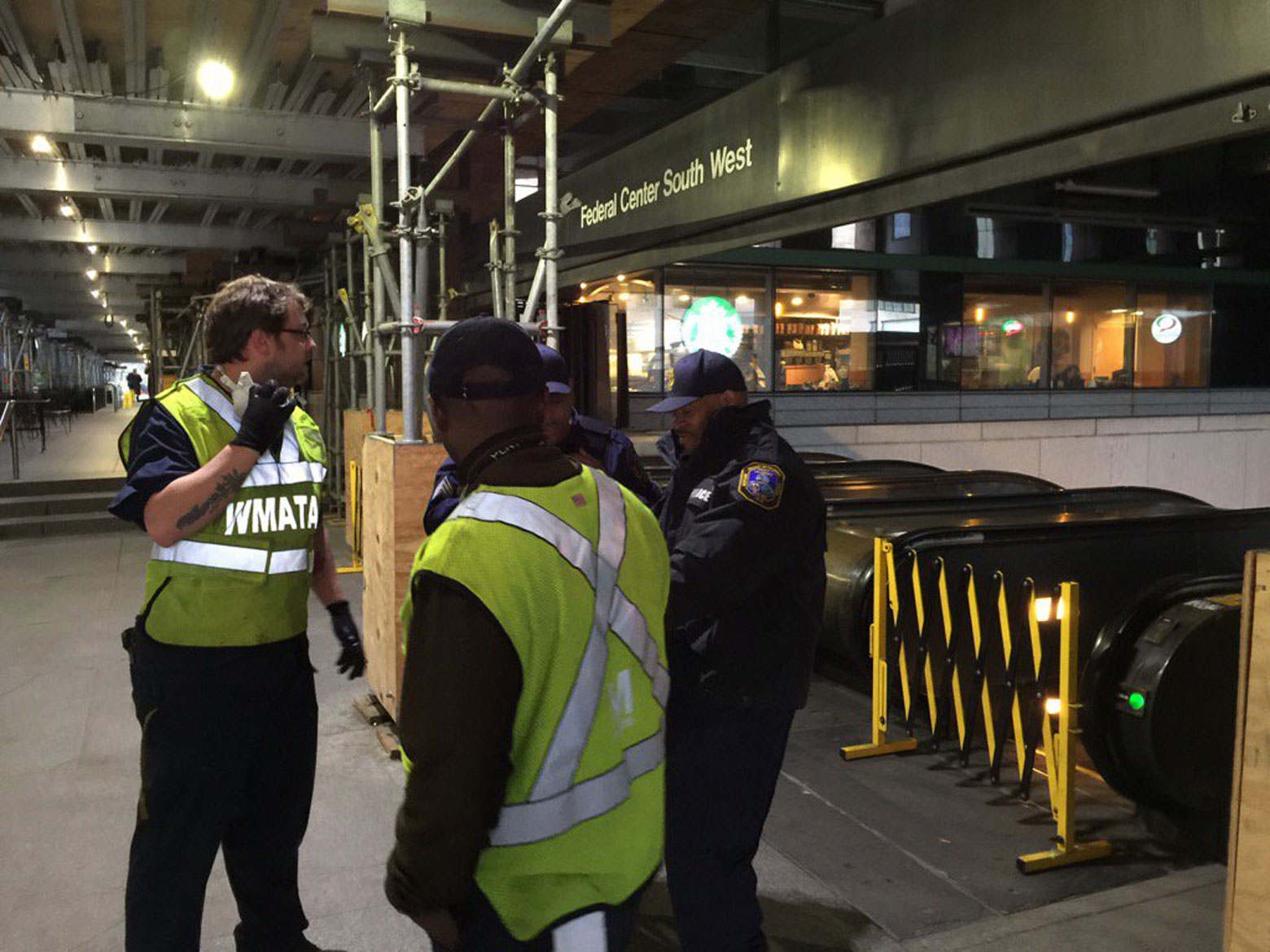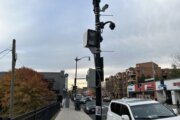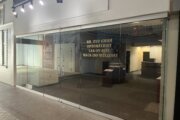WASHINGTON — The first extended shutdown of Metro stations and essentially an entire rail line will disrupt commutes across the D.C. region around the clock from June 18 to July 3.
While the full WTOP guide to this track work “surge” provides complete details and options, here are the basics to avoid being caught off guard:
1. There is no real Blue Line service.
Metro riders cannot take the Blue Line into or out of D.C. or Rosslyn during this shutdown. The Blue Line is only running between Franconia-Springfield and Arlington Cemetery, with no connection to Rosslyn except for a shuttle bus that will run only in the middle of the day on weekdays (about 9:10 a.m. to 4 p.m.) and even then only once every 24 minutes.
Metro General Manager Paul Wiedefeld is urging Blue Line riders to take Yellow Line trains into D.C. There will be no extra Yellow Line trains during rush hour.
“If you’re going into the District or going back out, you should be taking the Yellow Line to L’Enfant Plaza and doing that, the trip to Arlington is basically to Arlington Cemetery, that’s what it does,” he said.
Riders could also choose VRE or buses.
2. Prince George’s County is “cut off.”
The other stretch shutdown is between Eastern Market and Minnesota Ave. and Benning Rd., cutting off direct Metrorail service to much of Prince George’s County.
“That message has got to get to folks very clearly, and to understand that they really need to stay in place as much as possible,” said Malcolm Augustine, Prince George’s County Metro Board Member.
Prince George’s County Executive Rushern Baker asked the state of Maryland for additional help but said he has not heard back.
“We want people and businesses to look at giving the option — and the federal government — for people to telecommute, to work from home, to think of other alternatives during this two-week shutdown period. It’s a lot to ask for, but this is an extreme situation,” Baker said.
The Office of Personnel Management has directed agencies to make the best decisions for their workers.
Metro cannot accurately estimate how long a trip will take at rush hour for riders who take an Orange or Silver Line train from Prince George’s County or eastern D.C. to the closure zone, wait for a shuttle bus to Eastern Market, and then finally board another train to their destination.
Because Metro is not sure how many people will still try to ride the rails, it is not clear how long the lines will be for shuttle buses during peak periods. The buses will be overwhelmed unless a significant number of riders shift away from the Orange, Blue and Silver Lines.
Riders who do take the shuttle buses will tap their SmarTrip card to leave the rail station, then tap back in after getting off the shuttle. Metro said fare gates have been updated so that the fare charged will be as if the entire journey is a single rail trip.
Metro is charging peak fares.
3. Even where stations are open, there are significant service cuts on the Orange and Silver Lines.
The Orange and Silver Lines will each only run every 10 minutes during rush hour where stations are open. Combined with the lack of Blue Line trains through D.C. and Maryland, that means riders will see a 54 percent cut in rush hour trains downtown, leading to significantly longer waits and potentially extra crowding.
Along other stretches of track served by the Orange and Silver Lines, service cuts from a regular rush hour schedule range from 40 percent to 60 percent. The largest cut is on the Silver Line between Benning Rd. and Largo Town Center.
4. Commuter trains, Green Line, Yellow Line, and additional buses are among the backup options.
For riders who want to stick with Metro, or who can use TheBus’s 15X service between New Carrollton and Greenbelt, the Green Line will be a viable alternative. During normal Metro service, there also may be extra parking at Green Line garages.
Other options for Maryland commuters who usually use the Blue, Orange or Silver Lines include commuter buses or MARC trains. While MARC’s Penn Line will operate on normal service, MARC is adding some extra railcars to Camden Line trains. The Camden Line runs through Greenbelt, College Park and Riverdale.
For Virginia commuters, the Yellow Line, buses or VRE are among the best backup transit options.
Leaders across the region are also urging commuters to carpool, slug or bike depending on the weather.
5. D.C. is adding parking and parking restrictions.
Despite the push to keep more cars from clogging roads, the District Department of Transportation expects increased traffic and is adding parking and parking restrictions in an attempt to deal with it.
D.C. is extending rush hour parking restrictions along key arteries that also carry major bus routes. Drivers should check signs carefully before parking.
Lot 3 at RFK Stadium will be open for $7 daily parking during this track work zone. From there, commuters can either take Metrobus or Metro shuttle buses, or they can walk about a half mile to the free DC Streetcar to Union Station.
Overall, the District now estimates this work zone will impact more than 290,000 commuters.
6. Predicting traffic may be challenging.
With routes to and from D.C. and eastern Prince George’s County limited, Augustine warned of backups on roads like Route 50 and 295 if commuters shift from Metro to driving alone.
The University of Maryland’s National Transportation Center predicts more significant delays could come on the Beltway, which could add about five minutes to usual rush hour commutes.
A number of experts warn about predicting traffic in advance, especially because a single crash or other incident at a critical time can have such a significant impact. WTOP Traffic is available 24/7 to keep drivers up to date.
7. Why is this a shutdown while the first work zone was single-tracking?
This track work is largely on the elevated tracks that carry trains from RFK Stadium over the Anacostia River, an area with significant safety issues identified by the FTA and an insignificant amount of space that would leave workers a margin for error.
“You can see it by looking behind us,” Wiedefeld said in front of the elevated tracks just before the work zone began. “One is just the volume of traffic that we have here — it’s one of our busiest sections. It’s also where we have three interlockings, which are complex areas where trains go back and forth between different lines, and it’s very narrow, so physically to get up there and do the work we have to do, and the nature of the work, that’s what requires a shutdown.”
The first work zone near Ballston had more room to work with and slightly different work to accomplish.
8. Other track work that could slow your Metro trip
Metro had originally planned to shut down the Green Line between U Street and Gallery Place on Saturday, June 25 and Sunday, June 26, but that track work has now been erased from the schedule. Metro now plans to work in that area on nights and weekends from July 3 to 7, 17 to 21 and 24 to 28 when trains will share a single track.
During this second round of accelerated work, Metro also plans to work on the Red Line between the Grosvenor and Shady Grove stations on weeknights from June 26 to June 30. Metro now begins weeknight track work as early as 8 p.m.
And on Sunday, June 26, Silver Line service will be disrupted in the Tysons Corner area for a safety drill at the Greensboro Station.
9. There is no scheduled track work July 4.
This shutdown will end July 3, allowing Metro to run full service for fireworks fans on Independence Day. Any work that is not completed will be added to night and weekend work or to the planned weekend shutdown Aug. 6-7 between Stadium-Armory and Benning Rd. and Minnesota Ave.
The shutdown shifts to the Blue and Yellow Line between Reagan National Airport and Braddock Rd. on July 5. When that work ends July 11, the work will shift to the other side of the airport station. From July 12-18, the Blue and Yellow Lines will be shut down between Reagan National Airport and Pentagon City.
For the last week and a half of July, the work returns to the tracks between Ballston and East Falls Church so Metro can work on the other track not dealt with during the initial single-tracking zone.
Aug. 1-7 is the first 24/7 work that impacts the Red Line.
10. Reminder: Metro closes at midnight now, even on weekends.





